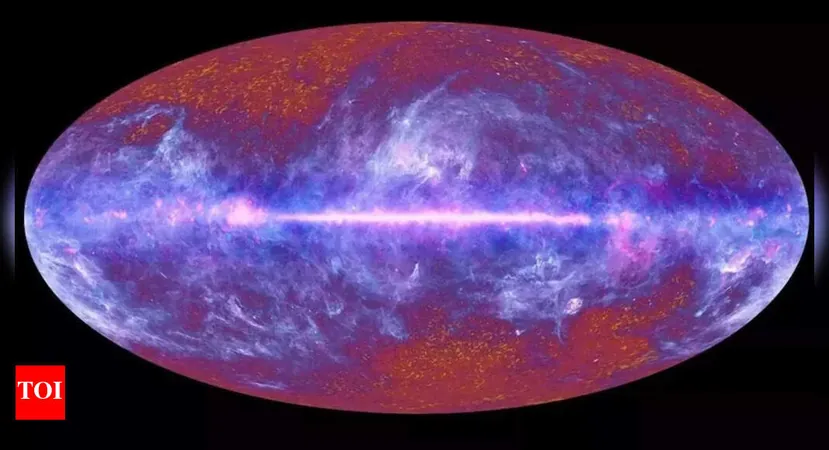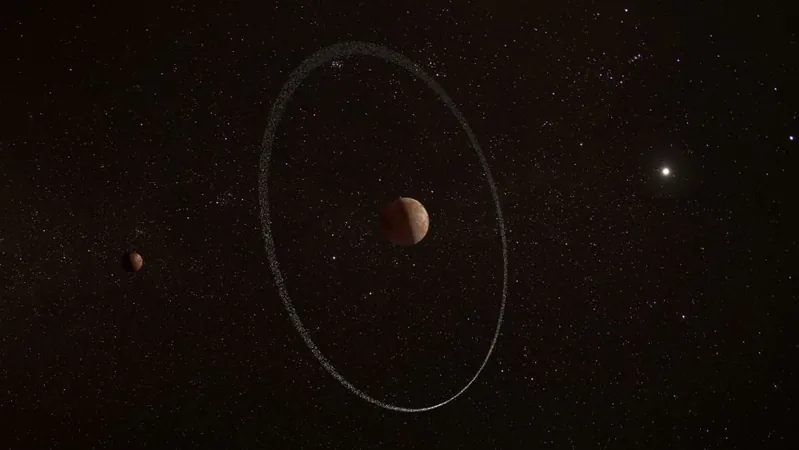
Unveiling the Universe: Groundbreaking Discovery of 13-Billion-Year-Old Cosmic Signal
2025-06-15
Author: Noah
A Historic Breakthrough in Cosmic Exploration
In a revolutionary moment for astronomy, scientists have successfully captured a 13-billion-year-old microwave signal from the Universe's early days, known as the Cosmic Dawn. This monumental discovery, made possible by Earth-based telescopes in Chile, offers unparalleled insights into the formation of the first stars and galaxies.
The Cosmic Dawn: A Glimpse into Our Cosmic Origins
The Cosmic Dawn represents a critical period in cosmic history, spanning from about 50 million to one billion years after the Big Bang. In this era, the first stars—dubbed Population III stars—ignited and illuminated a predominantly dark Universe. As these stars emitted intense ultraviolet radiation, they triggered the reionization of hydrogen gas, allowing light to traverse the cosmos for the first time. This period not only saw the birth of stars but also the formation of small galaxies and black holes, shaping the fundamental structure of the Universe as we know it.
Challenging Conditions and Groundbreaking Technology
Detecting microwaves from the Cosmic Dawn poses significant challenges; these signals are about one million times fainter than typical cosmic microwave background radiation. Factors such as terrestrial radio interference, atmospheric conditions, and technological limitations have made such detections incredibly difficult historically. However, the CLASS (Cosmology Large Angular Scale Surveyor) project team, led by Professor Tobias Marriage from Johns Hopkins University, succeeded where many believed it impossible.
How CLASS Overcame the Odds
"People thought this couldn't be done from the ground," remarked Prof. Marriage. By utilizing custom-designed telescopes strategically located in the high-altitude Andes of northern Chile, the team was able to minimize interference from Earth-based signals. They cross-referenced their findings with data from prior space missions, like NASA's Wilkinson Microwave Anisotropy Probe, to identify and eliminate extraneous noise, isolating a reliable cosmic signal.
The Science of Polarized Light
The microwave signals detected by the CLASS project are polarized, meaning their light waves align in specific directions after bouncing off cosmic matter. This phenomenon is akin to sunlight reflecting off a car, creating a glare that polarized sunglasses can diminish. As Dr. Yunyang Li, a co-author of the study, explained, this polarization provides essential clues about the early Universe's interactions with light.
Charting New Frontiers in Cosmic Discovery
This significant achievement not only enhances our understanding of the Universe's formative years but also opens new avenues for exploration. The CLASS project offers a compelling method for studying cosmic origins without solely relying on space missions, demonstrating that advanced Earth-based technology can rival the capabilities of space telescopes. This breakthrough paves the way for further investigations into the birth of stars and galaxies, ultimately enhancing our grasp of cosmic evolution.









 Brasil (PT)
Brasil (PT)
 Canada (EN)
Canada (EN)
 Chile (ES)
Chile (ES)
 Česko (CS)
Česko (CS)
 대한민국 (KO)
대한민국 (KO)
 España (ES)
España (ES)
 France (FR)
France (FR)
 Hong Kong (EN)
Hong Kong (EN)
 Italia (IT)
Italia (IT)
 日本 (JA)
日本 (JA)
 Magyarország (HU)
Magyarország (HU)
 Norge (NO)
Norge (NO)
 Polska (PL)
Polska (PL)
 Schweiz (DE)
Schweiz (DE)
 Singapore (EN)
Singapore (EN)
 Sverige (SV)
Sverige (SV)
 Suomi (FI)
Suomi (FI)
 Türkiye (TR)
Türkiye (TR)
 الإمارات العربية المتحدة (AR)
الإمارات العربية المتحدة (AR)